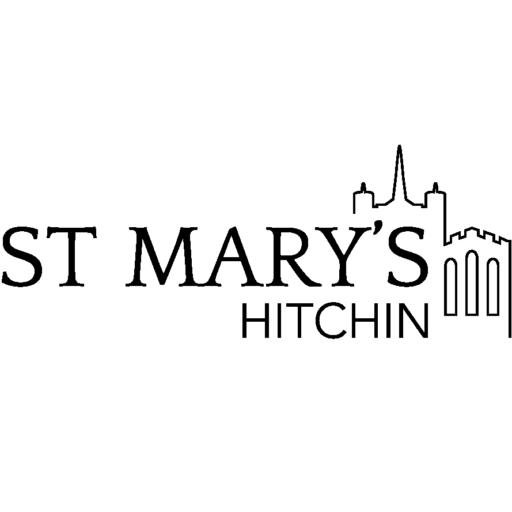History
St Mary’s is steeped in history.
 In 792 AD Offa, King of Mercia, founded a Benedictine monastery on this site. in 910 the monastery was destroyed by fire and the monks moved to the Abbey at St Albans. The second church, mentioned in the Domesday Book, was partly destroyed by a ‘great wind‘ in 1115, and an earthquake in 1298. The present church dates substantially from the 14th and 15th centuries. The church was originally dedicated to st Andrew, but came to be known as The Church of St Mary due to the powerful and influential Guild of our Lady founded in the 15th century. One of the glories of this church is its many fine roofs and the carvings associated with them. when you walk around the church don’t forget to look up. Here are 11 things to look out
In 792 AD Offa, King of Mercia, founded a Benedictine monastery on this site. in 910 the monastery was destroyed by fire and the monks moved to the Abbey at St Albans. The second church, mentioned in the Domesday Book, was partly destroyed by a ‘great wind‘ in 1115, and an earthquake in 1298. The present church dates substantially from the 14th and 15th centuries. The church was originally dedicated to st Andrew, but came to be known as The Church of St Mary due to the powerful and influential Guild of our Lady founded in the 15th century. One of the glories of this church is its many fine roofs and the carvings associated with them. when you walk around the church don’t forget to look up. Here are 11 things to look out
or:
 1. The 15th century font. The twelve apostles at it’s base were mutilated by Puritan soldiers in the Civil War.
1. The 15th century font. The twelve apostles at it’s base were mutilated by Puritan soldiers in the Civil War.
2. Above the south door can be seen a priest squint, through which the priest could keep an eye on the events in the church below.
3. Young children will enjoy the animal carvings on the front pew desks.
4. The 15th Century pulpit has lost its canopy, Its ‘wine-glass‘ base and Its clerk’s desk, but Is still very fine to look at.
5. The Angel Screen is considered one of the finest in the country. On it’s eastern side are the fraternity stalls used by the guild of ‘Our Blessed Lady St Mary the virgin’, dating from the mid-15th century.
6. Small children will enjoy the mouse, trade mark of the carpenter Thompson of Kilburn in Yorkshire on the end of the altar rail.
 The family monuments of the Radcliffes of Hitchin Priory adorn the east wall of the chapel.
The family monuments of the Radcliffes of Hitchin Priory adorn the east wall of the chapel.
7. The surviving fragments of the medieval glass that once glorified the whole church can be seen in the traceried heads of the east window.
8. The entrance to the Charnel House. This was used as a prison by Cromwell’s men. The door, which is original, has a handle with hearts on it, giving us a date when James Herte was vicar.
9. The eastern portion of the north aisle roof is a fine example of medieval woodwork and is believed to date from the early 14th century.
10. The Processional Cross was given to the church in 1958 and is a fine example of modern craftsmanship.
11. As you leave the church by the south porch with its medieval door, the sundial can be seen on the south east corner of the tower. It was placed there in thanksgiving for the restoration of Charles
II. The solid tower houses a peal of 13 bells.
You can read a detailed history of the Church and its surroundings in the town on this link HERE to our ‘Conservation Management Plan’. This is a living document which will be updated as more research is added.
ST MARY’S OPENING TIMES
Except when special services occur, we are open for all visitors from 9 am until dusk in winter or 5 pm in Summer. Morning prayer will be said at 9 am. on Mondays to Thursdays only
Please note: There may be no entry at these times where this coincides with weddings or funerals, maintenance, or any unforeseen events. If so, this will be indicated by signs outside the main doors. Do check with the Parish Office well ahead if you are making a special journey.
DROP US A LINE
We would love to meet you, why not pop along to one of our services, or get in touch.
